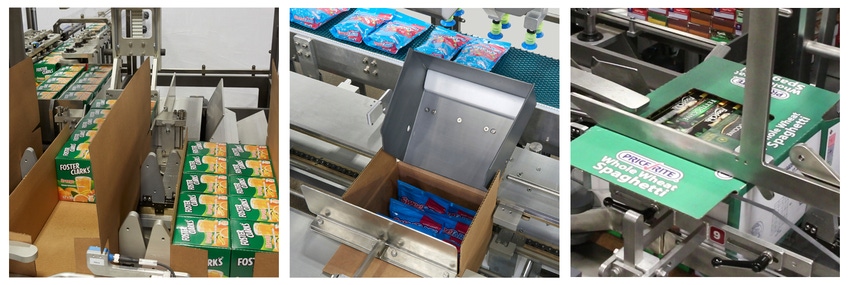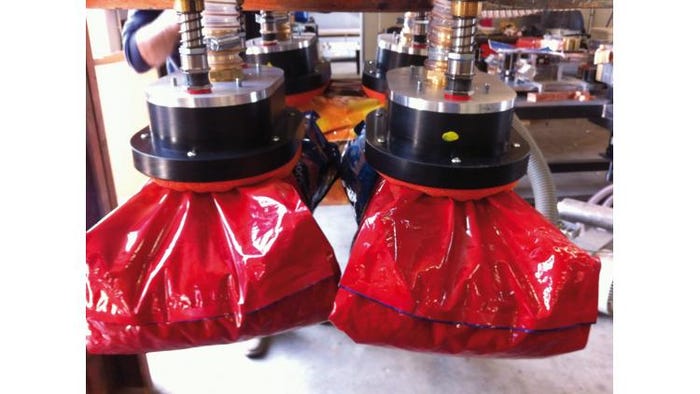How much automation do you really need on your packaging line?

Weigh the needs of your packaging operation as it relates to workforce interaction and skill, quality, safety, productivity and profitability when deciding to use semi-automated or fully automated packaging machines on your production line.
With the growing implementation of robotics and automation into production lines, various manufacturing sectors are able to reduce costs, provide even more consistent quality products and improve profit margins. But just how much automation do you really need on your packaging line?
Simply eliminating workers and oversight on the line does not always bring about greater efficiency. Manufacturers should understand the requirements of their lines to select the right level of automation. Will semi- or fully automated packaging equipment meet their needs?
Differences between semi- and fully automated lines
Depending on its use, full or partial automation can greatly assist manufacturers in achieving their business goals. The differences between the two hinge on one major factor: employee interaction. Fully automated lines operate with little to no workforce involvement, while semi-automated lines rely on some employee interface to maintain operations.
There are advantages and disadvantages depending on the circumstances. Both semi-automated and fully automated operations have a proven track record of reducing production costs, increasing profits and improving product quality.
Let’s look at the pros and cons of each one separately.
Considerations of semi-automation
Semi-automated manufacturing lines give way to a collaborative model that allows automated robots and equipment to operate alongside employees on the manufacturing floor. While employee interaction along a packaging line requires consideration for human error and safety concerns, it can also help manufacturers increase line flexibility.

Not all applications require the high speeds or positioning accuracy of fully automated packaging systems. Sometimes a semi-automatic solution provides the right level of flexibility and affordability. Photo courtesy of Piab.
Employees can think critically about problems that can occur on the manufacturing floor that are beyond what any machine is equipped to handle. Instead of awaiting feedback from machines themselves, a skilled workforce has the ability to work with equipment to ensure any machine stoppages are addressed in real time, rather than relying on machinery to properly correct errors on their own.
This model provides the opportunity for continuous improvements along the line for smooth production and an increase in efficiency. However, a major challenge among manufacturers across various industries in the Unites States today is acquiring, developing and retaining skilled employees, which can necessitate greater steps toward a fully automated line.
Considerations of full automation
By implementing a fully automated system, manufacturers eliminate significant levels of workforce on the production line. These processes are especially suitable for the pharmaceutical and meat and poultry industries. According to a report from FDAnews, human error accounts for nearly 80% of deviations in the pharmaceutical and related manufacturing industries. By fully automating product lines and reducing workforce interaction, pharmaceutical manufacturers can continue to improve such deviations and ensure customer satisfaction.
In the meat and poultry industry, manufacturers focus mainly on quality and sanitation. By removing the human element, food processors can help decrease the risk of product contamination. Fully automated lines can help ensure that manufacturers are complying with the latest Food Safety Modernization Act (FSMA) regulations and help improve product quality and safety.
Additionally, fully automated lines can help to guarantee safety of the workforce on the manufacturing floor. As automation equipment design improves to allow for safer employee interfaces, the workforce can increasingly interact with equipment without compromising safety and skilled workers are able to interact with automation equipment remotely. Fully automated equipment can help increase employee safety on the line without compromising product quality.
Scope out solutions
As automation advances revolutionize manufacturing, it’s imperative for packaging engineers to keep up with the latest technologies. Manufacturers looking to automate their packaging lines with semi- and fully automated equipment can find many solutions on the show floor at Pack Expo East (Feb. 27-Mar. 1; Philadelphia).
Exhibitors at Pack Expo East are taking major steps in automation along product lines with the intention of helping end users comply with the latest regulatory and safety standards while increasing efficiency and product quality. Event attendees can also learn tips and gain more insight at the Innovation Stage, a series of 30-minute sessions in which a range of solutions and case histories will be shared by subject matter experts addressing automation, regulatory compliance, workforce development and best practices. The Innovation Stage is located on the show floor and is free to all attendees.

Sean Riley is the senior director, Media & Industry Communications, for PMMI, The Association for Packaging and Processing Technologies. PMMI owns and organizes the Pack Expo portfolio of trade shows. He began his work with PMMI in 2006 as editor of its Packaging Machinery Technology magazine. He is a member of various industry organizations including the International Packaging Press Organization (IPPO) and the American Society of Business Press Editors.
About the Author(s)
You May Also Like




